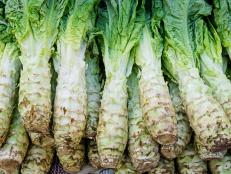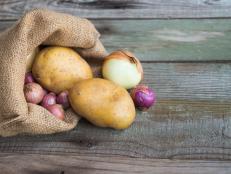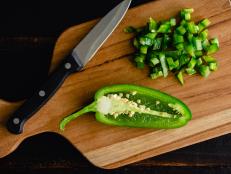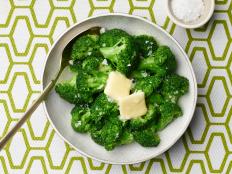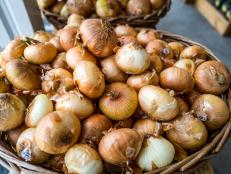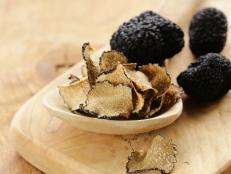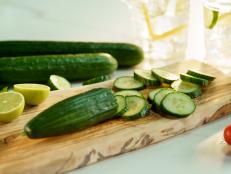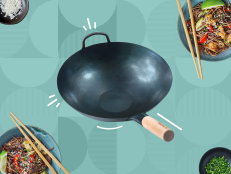What Are Collard Greens?
Plus, some of our favorite collards recipes.

bhofack2/Getty Images
By Layla Khoury-Hanold for Food Network Kitchen
Layla Khoury-Hanold is a contributor at Food Network.
You’ve probably seen collard greens in the supermarket next to other leafy greens such as kale or Swiss chard. Or maybe you know collards as a staple of African American cooking and fixture on tables across the American South. But what exactly are collard greens? For more info, we consulted Alexander Smalls, chef, restaurateur and author of Between Harlem and Heaven.

Monique Shaw/Getty Images
What Are Collard Greens?
Also known as collards, collard greens are a type of cabbage with loose, leafy heads of light-to-dark green leaves.
The vegetable is a staple of African American cuisine, and Smalls notes that collard greens were one of the few crops that enslaved African people could grow and harvest in the antebellum South. “The best documentation is that [collard greens] came through Jamestown with the slaves. It’s an extraordinary, sturdy, durable green. It’s hardy and it doesn’t need a lot of attention," explains Smalls. That made it especially valuable to those who weren't given a lot to eat or land to grow their own food.
Collard greens are typically prepared by braising them with aromatics, broth and vinegar until tender. Historically, Smalls says, collard greens were stewed for longer periods. “Stewing was a part of the African culinary skill base. Things were thrown in big pots and cooked for hours, in part because they had to work in the fields," he says. "There was value not just in the greens themselves but also in the potlikker, or flavorful cooking liquid. You’d have these amazing greens you could serve with rice or grits and it was a whole meal. And you drank your potlikker. It was hearty, it filled you up and it was a very inexpensive.”

bhofack2/Getty Images
Because enslaved people didn't have access to prime cuts of meat, they used less expensive scraps to flavor their greens, much of which was heavily salted as a preservative, Smalls says.
Today, collards are often simmered with smoked meats such as ham hocks, bacon or turkey wings or legs for added flavor.
What Do Collard Greens Taste Like?
Raw collard greens taste bitter and have a sharp, tangy flavor. When cooked, collard greens have a milder flavor and taste a bit earthy.
Collard Greens vs Kale

Malaika Hilson Photography/Getty Images
Collard greens and kale are both members of the brassica oleracea family and can be eaten raw or cooked, but there are some differences between them. Kale has large ruffled, curly leaves while collard greens have smooth, broad, flat leaves. Kale also has a more pronounced bitter flavor than collard greens, and collard greens have an earthier flavor when cooked. Kale tends to be used in salads, smoothies and sauteed vegetable dishes, whereas collard greens are typically braised or steamed and used as wraps.
How to Clean and Store Collard Greens
To prepare collard greens for cleaning, cut away their tough stalks and stems and discard any leaves that are bruised or yellow. Fill a sink or large bowl with water and a pinch of salt (which is said to help remove sediment) and wash the collards thoroughly to remove the grit, two or three times, until the water runs clear. Dry the leaves thoroughly.
Unwashed collard greens can be wrapped in damp paper towels and stored in a plastic bag in the crisper drawer of the refrigerator for up to five days.
Should You Add Salt When Washing Collard Greens?
Some people add a pinch of salt during the washing process as it’s said to help remove sediment. Smalls notes that conventionally purchased greens are not as dirty as some used to be, so adding salt may not be necessary. (And you may find that you need to only soak and wash the greens once or twice.)

bhofack2/Getty Images
“The last rinse was when salt was involved. Some people put sugar in the water because collard greens are considered bitter and they can have a bit of a bite,” Smalls says. “Sometimes the greens were a little older than you wanted them to be, a little tougher, so salt helped tenderize them and sugar helped to cut the bitterness.”
How to Cook Collard Greens Without Meat
You can cook collard greens without meat and still have a flavorful dish. Here are some tips for making flavorful vegetarian collard greens.
Change Up the Stock
Instead of chicken stock, use vegetable stock to simmer the collards. Smalls likes to make what he calls a “flavor bath,” to which he adds plenty of spices and aromatics, as well as some reserved, chopped collard green stems, aka “flavor studs.”
Add Aromatics
Add plenty of aromatics such as diced onion, garlic, shallots and chili peppers, as well as a variety of spices. “I’m from the Gullah Geechee community, so everything is heavily spiced and herbed and flavorful. There are a lot of aromatics being used,” Smalls says. “The French Huguenots settled here, so herbs were a big part of flavoring vegetables especially greens. It was not uncommon to have herbes de Provence, sage, rosemary. Of course, from the African experience were the chili peppers, lots and lots of peppers, that flavored greens and the potlikker.”
Incorporate Acid
Be sure to incorporate an acidic component to balance the earthy nature of the collards. Add diced, canned tomatoes and experiment with different types of vinegar, such as apple cider, red wine, balsamic, malt or white distilled. You can also finish the dish with an acidic ingredient such as fresh lemon or lime juice and/or zest.
Lean on Umami
Consider adding umami-rich ingredients such as tomato paste, fresh or dried mushrooms, nutritional yeast or soy sauce.
Go For Smoke
To replicate the smoky flavors of certain meats, season the collard greens with smoked paprika, smoked sea salt or chipotle hot sauce. Smalls likes to spike sauteed collards with brewed Lapsang Souchong, a Chinese black tea renowned for its smoky profile.
Consider More Veggies
Experiment by adding other vegetables to your collard greens. At Smalls' renowned former restaurant Café Beulah, he bolstered sauteed collards with sweet potatoes, rosemary, sage, garlic and chili peppers.
Add a Final Flourish
When Smalls makes collard greens at home, he likes to sprinkle them with Benne seeds just before serving.
Collard Greens Recipes
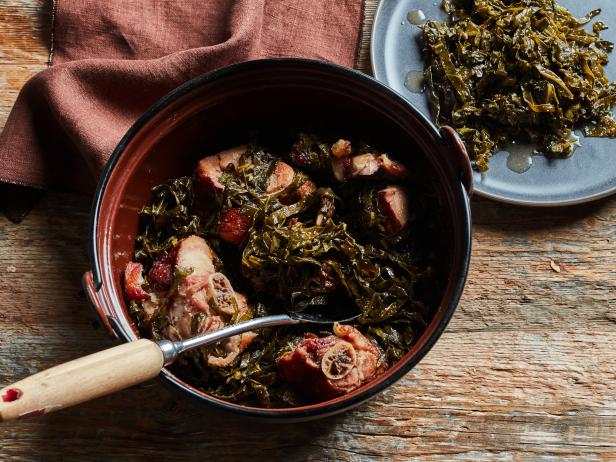
Matt Armendariz
This classic Southern rendition of braised collard greens features smoked turkey wings for an added flavor dimension. Be sure to cut the leaves from the tough center rib before slicing them very thinly.
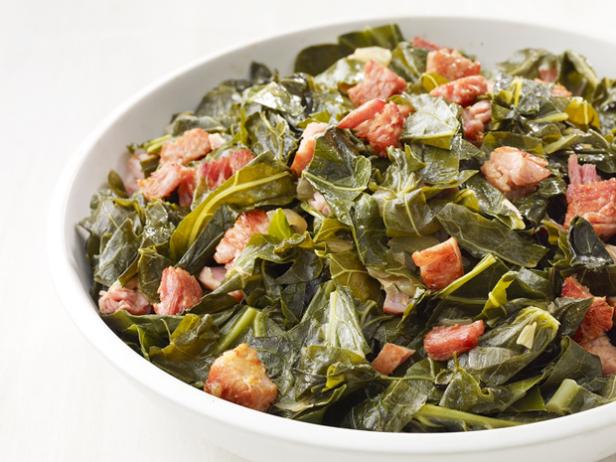
Antonis Achilleos
This recipe cuts down on prep time by using pre-washed and cut frozen collard greens. It gets a boost of flavor from the diced bacon and a pat of butter stirred in at the end.

Stephen Johnson, 2014, Television Food Network, G.P. All Rights Reserved
Collards and butternut squash team up to create a hearty, nutritious side that makes a fine accompaniment to any autumnal supper. The secret ingredient to this vegetarian collard greens recipe is ginger, which adds warmth and a depth of flavor to both veggies.

In this weeknight pasta dish, thinly sliced collard greens are quickly sauteed in bacon drippings bolstered by fragrant garlic, turning them into the star of the meal.

Matt Armendariz
Steaming collard green leaves makes them pliable enough to roll into wraps and take the place of a tortilla. The filling here features a Jamaican-inspired medley of tangy jerk chicken, coconut black beans, avocado and a creamy lime slaw.

Renee Comet, 2016, Television Food Network, G.P. All Rights Reserved
This riff on Hoppin’ John, a classic New Year’s Day dish especially popular among communities with ties to the American South, features tender braised collards augmented with ham and black-eyed peas finished with butter. It’s served over steel-cut oats for a savory breakfast of champions packed with fiber and protein.
Related Links:
50 Vegetable Sides That'll Have Everyone Grabbing Seconds






















